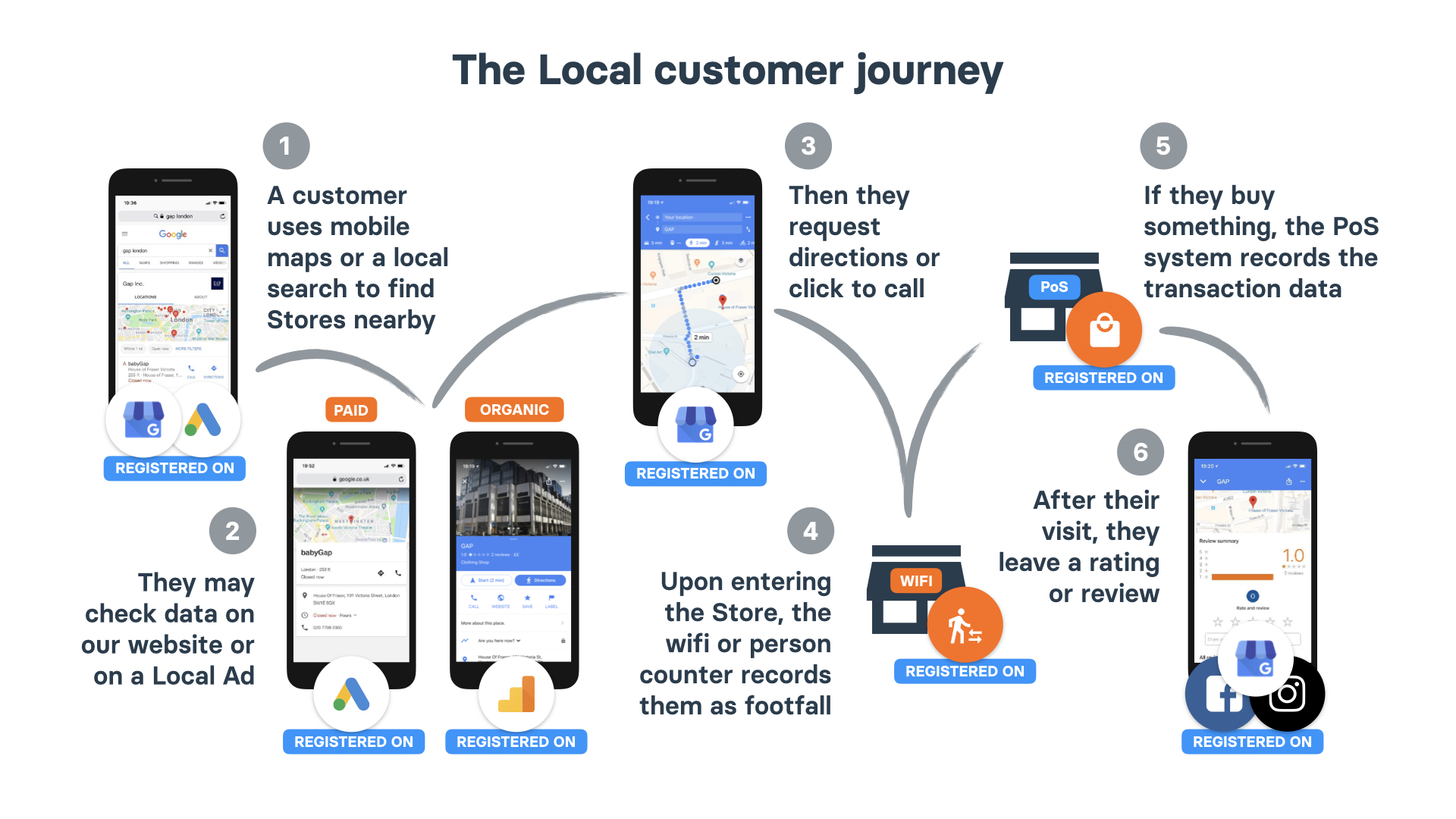The Retail Customer Journey: From Search to Store
In today’s changing retail landscape, customer pathways are anything but linear. Between online shopping, mobile search and new expectations for in-store interactions, the customer experience is constantly evolving — and retailers are struggling to connect with customers across all channels and provide a seamless shopping experience.
While no two customer paths are identical, there are a few defining steps on the retail customer journey that, when identified, can help illuminate buyer behavior in today’s digital business economy.
Following the Retail Customer Journey

Searching for a Store Nearby
Imagine this: while traveling for work, a businessman realizes he forgot toothpaste. What does he do? If he’s like most people, the answer is look up the nearest pharmacy or convenience store to his hotel. Or, perhaps he’s headed to a new part of town for a meeting, but he wants to pick up coffee first. Rather than drive around aimlessly looking for a Starbucks, his first move will likely be to check mobile maps or a local search for the nearest location.
That’s because the percentage of shoppers who begin product searches on digital channels has been consistently on the rise — it jumped from 71 percent to 87 percent from 2017 to 2018 alone. For the modern retail customer, their journey begins when they search for a store nearby and discover options registered through platforms like Google Maps or Google Ads.
Checking Data on Website
Before deciding on a particular location or option, a prospective customer may likely gather data to determine where they will go to complete their purchase. This may involve exploring the website of the retail location or checking online reviews to learn more about what kind of experience they can expect in store. In fact, positive online reviews can actually have a significant impact on foot traffic.
Requesting Directions or Calling
Once satisfied that the researched location is available and amenable to their needs, the customer will request directions — typically through a maps app, such as Google Maps, Citymapper or Apple Maps — or click to call the location. By keeping your business data updated in the relevant local platforms, you can ensure potential customers are able to find all the information they need.
Being Recorded as Footfall in the Store
As a retail buyer makes footfall in your store, their presence can be recorded either by the WiFi, by a person counter or by other in-store mechanisms. At this point in the retail customer journey, the prospective customer has been clearly identified and is now fully engaged in the buying decision. Having this record in the store is important to know what percentage of your customers convert to sale after browsing.
Being Recorded as Point of Sale Data
If the customer then makes a purchase, the point-of-sale (PoS) system records the transaction data and the sale is officially converted. This data is then helpful in comparison with your footfall data to better understand the customer experience within your store. Additionally, for some types of product or for people in a loyalty scheme, there may be some customer information attached to the transaction, such as a mobile number or an email, that could further be used (as long as we remember to ask for appropriate customer permissions, which vary country by country)
However, the journey isn’t quite over yet.
Leaving a Rating or Review
The final phase of the retail customer journey is leaving an online rating or review, either on Google Business, a ratings review site or your store’s social media, like Facebook or Instagram. At this point, the local customer has completed their journey from discovery, to research, to entrance, to purchase and, finally, to review. Throughout each phase of the journey, the customer has utilized online information with in-person action to create an omni-channel experience.
How to Ensure Customers Find Your Store
While the steps of this journey seemed naturally progressive, the customer wouldn’t have ever made it into the store if it wasn’t easily found through online search or mobile maps. Unfortunately, helping customers find your store is often easier said than done. With so many options for online location data, keeping track of all of your information — and optimizing it for SEO — is a big task. Combine this with creating targeted local ads, tracking customer data and managing your store’s online reputation, and it’s a wonder business owners can act on all of this in a meaningful manner that drives more footfall and translates into more revenue.
But here’s the good news: you don’t have to do it all. Localistico’s platform can simplify and streamline this entire process to help customers find your locations more easily and collect data on what happens when they do so you can make better, smarter marketing decisions.